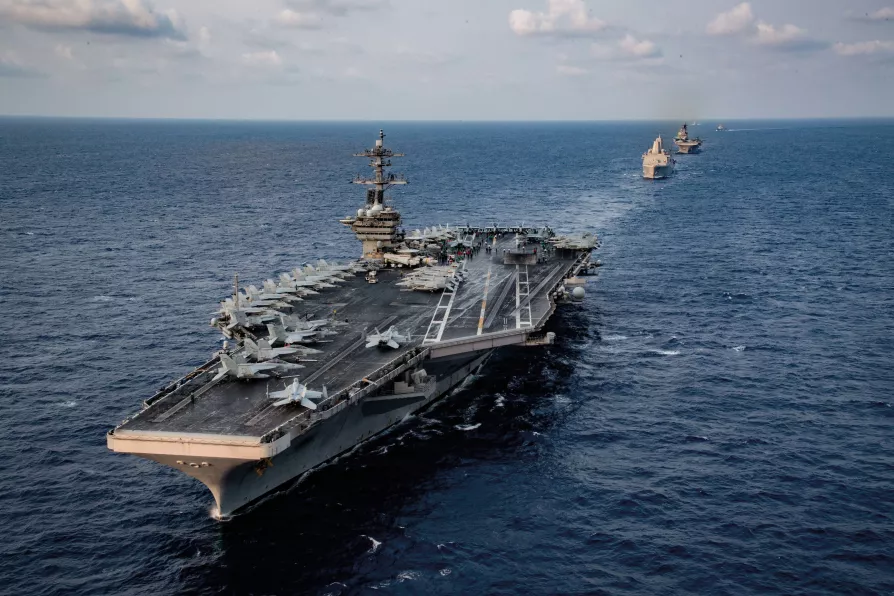Labour’s cynical recruitment drive normalises militarism, diverts attention from youth unemployment and public service cuts, and seeks to build consent for an increasingly aggressive defence agenda, argues GEORGINA ANDREWS

 INTIMIDATION: Ships from the Theodore Roosevelt Carrier Strike Group and from the America Expeditionary Strike Group transit the South China Sea, 2020
INTIMIDATION: Ships from the Theodore Roosevelt Carrier Strike Group and from the America Expeditionary Strike Group transit the South China Sea, 2020
MAJOR new announcements this month indicate that the US is intent on escalating its military interference in the Asia-Pacific and the seas around China.
The first announcement by the defence ministers of the US, Britain and Australia on the April 8 2024, revealed that the Aukus military alliance is seeking to expand with plans to invite Japan into the anti-China pact.
This was followed by another announcement, three days later, at a summit in Washington between the US President Joe Biden, Prime Minister of Japan Fumio Kishida and the President of the Philippines Ferdinand Marcos Jnr, where a new trilateral agreement between the countries was unveiled, including plans to conduct joint naval exercises in the South China Sea this year.

Huge protests against corruption and preventable deaths during flooding have rocked the government — the masses are not likely to be able to take direct control in their own interests yet, writes KENNY COYLE, but it’s a promising show of people power

In a speech to the 12th Xiangshan Forum in Beijing, SEVIM DAGDELEN warns of a growing historical revisionism to whitewash Germany and Japan’s role in WWII as part of a return to a cold war strategy from the West — but multipolarity will win out

The US’s bid for regime change in the Islamic Republic has become more urgent as it seeks to encircle and contain a resurgent China, writes CARLOS MARTINEZ

In the first half of a two-part article, PETER MERTENS looks at how Nato’s €800 billion ‘Readiness 2030’ plan serves Washington’s pivot to the Pacific, forcing Europeans to dismantle social security and slash pensions to fund it










